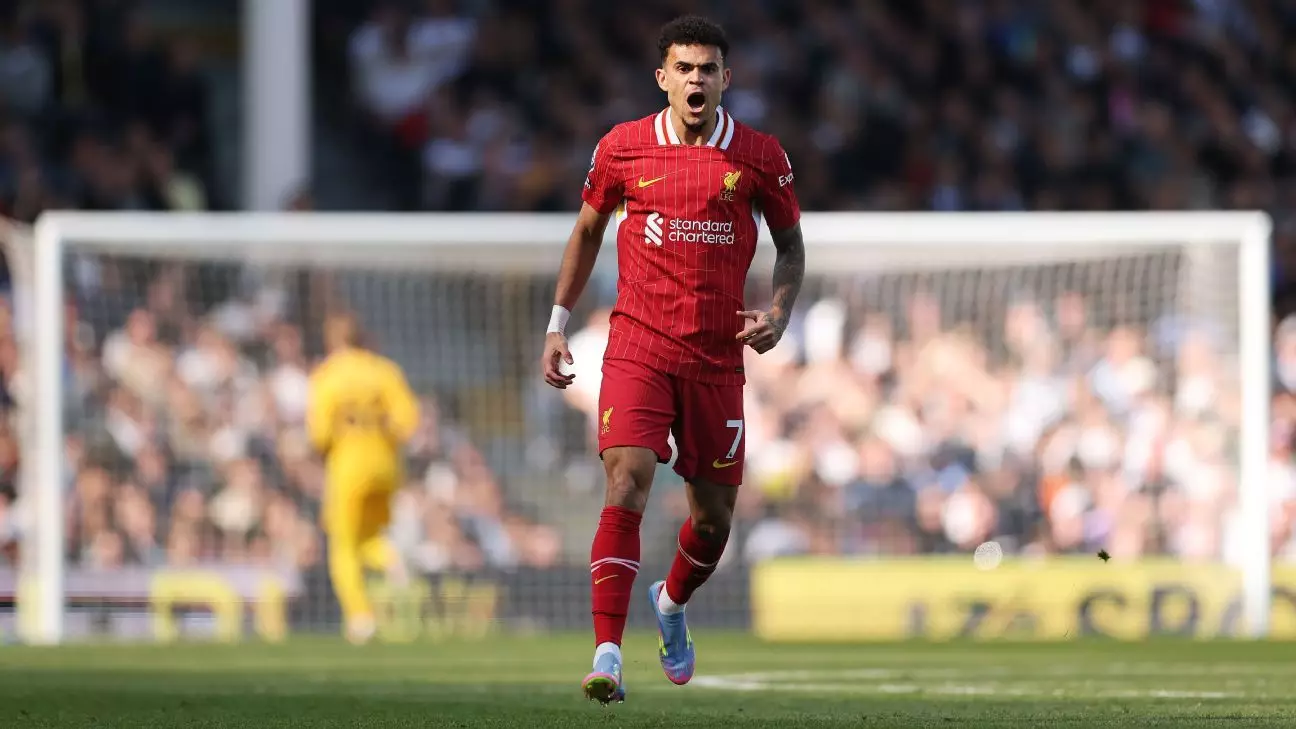As the summer transfer window approaches, FC Barcelona finds itself embroiled in a multifaceted dilemma regarding Liverpool’s talented winger, Luis Díaz. The Colombian has increasingly become a top target for the Catalan giants, who are eager to infuse their squad with fresh talent and dynamic play. However, the lurking threat of the Saudi Pro League complicates matters. Recent reports indicate that a significant financial offer from Saudi Arabia could deter Barcelona’s attempts to secure Díaz, who they attempted to sign last summer, reflecting their persistent interest.
Barcelona’s strategy has typically revolved around attracting players who can blend seamlessly with their traditional playing style. Díaz, with his flair and scoring ability, fits the bill perfectly. Yet, the allure of a lucrative contract from the oil-rich league presents a monumental challenge for the Blaugrana. Here lies a fundamental test for a club that has struggled financially in recent years — can they still compete for top talent against clubs backed by seemingly endless resources? This scenario raises broader questions concerning the financial sustainability of traditional clubs as they duel against the financial might of new players in the global football market.
Napoli’s Ambition: Pursuing Garnacho and Sudakov
In Italy, Napoli is turning its gaze towards Manchester United’s Alejandro Garnacho and Shakhtar Donetsk’s Georgiy Sudakov in a bid to bolster its attacking options. Such moves underline Napoli’s ambition to compete at the highest levels of Serie A and, potentially, the Champions League. Garnacho, just 20 years old, embodies the vibrant future that Napoli is aiming to harness. His pace and technical abilities could provide the club with a new offensive dynamism, especially following their past interest in him when Khvicha Kvaratskhelia departed for Paris Saint-Germain.
Sudakov presents a different type of acquisition; his versatility offers Napoli a unique tactical advantage that could allow for varying formations and styles of play. By seeking players who can transition between roles—akin to a No. 8 with the creative instincts of a No. 10—Napoli is crafting a team philosophy centered on adaptability and resilience. Thus, Napoli is not merely participating in the transfer market; they are strategizing on how best to position themselves as perennial contenders in Serie A and beyond.
The Pursuit of Young Talent: Borussia Mönchengladbach’s Watchlist
Meanwhile, Borussia Mönchengladbach is keeping a close eye on Union Berlin’s strikers, particularly Benedict Hollerbach. The Bundesliga club’s search for potential attacking reinforcements illustrates a broader trend in European football: the proactive approach to securing talent before they become stars. This strategy reflects Gladbach’s commitment to nurturing young talent, ensuring that they remain competitive in a rapidly evolving league.
The importance of identifying young, dynamic players cannot be overstated, especially for clubs that may lack the financial clout of Europe’s elite. By investing in prospects like Hollerbach, Gladbach not only enhances its squad but also builds towards a more sustainable future. This shift in focus away from big-name signings to scouting emerging talent signals a refreshing approach that could bear significant fruit in the long run.
Global Ambitions: MLS and European Clubs
Across the pond, Real Salt Lake’s pursuit of Boavista forward Róbert Bozeník highlights the growing ambition of Major League Soccer (MLS) teams to attract international talent. The negotiations for Bozeník, a potential Designated Player, indicate that MLS is not simply a retirement league, but a budding field for young talent seeking new challenges. As MLS clubs broaden their scouting efforts, they increasingly compete not just locally, but also globally, ensuring that they’re part of the larger conversation in professional football.
The interconnectivity of global football means that every transfer has ramifications that stretch far beyond mere statistics. For instance, Juventus’s staking of €40 million regarding Douglas Luiz’s potential departure illustrates how Italian clubs must balance financial sustenance with competitive integrity. Similarly, Manchester City’s interest in Bruno Guimarães as a possible replacement for Kevin De Bruyne underscores an ongoing quest for talent amidst uncertainty regarding future squad compositions.
In a continually evolving landscape, where the line between local and global markets blurs, clubs must remain strategic and innovative in their approach to transfers, adapting to the financial realities of the modern game while staying true to their historical identities. The 2023 transfer window promises to be an exciting chapter in this narrative, with numerous clubs striving to navigate the complexities of football’s burgeoning global economy.

